- Abstract
- Salad harvest volume among winter lettuce (main data).
- Salad lettuce harvest volume among winter lettuce (by prefecture).
- Area planted with winter lettuce – salad greens (main data).
- The area cultivated with winter lettuce, salad greens (by prefecture).
- Shipment volume of winter lettuce that is salad greens.
- Reference
Abstract
In recent years, Japan’s winter lettuce production has shown notable trends. The maximum harvest volume for 2022 reached 2.67 kt, with a cultivated area of 141 hectares. Chiba leads in shipping volume, reaching 431 tons in 2022. Historically, Chiba’s prominence in production is due to its favorable climate and advanced agricultural techniques. The increasing efficiency in harvest yield and shipping reflects growing demand and improved farming practices, highlighting Chiba’s key role in Japan’s winter lettuce industry.
Salad harvest volume among winter lettuce (main data).
Since 1989, Japan’s winter lettuce yield has experienced fluctuations. The peak yield of 4.22 kt in 1992 contrasts with the current level at 63.3% of this maximum. This decline indicates a shift in production dynamics or potential challenges in the industry. Despite the reduced yield, ongoing improvements in farming practices and technology may influence future trends. Understanding these shifts is crucial for optimizing production and meeting market demands.
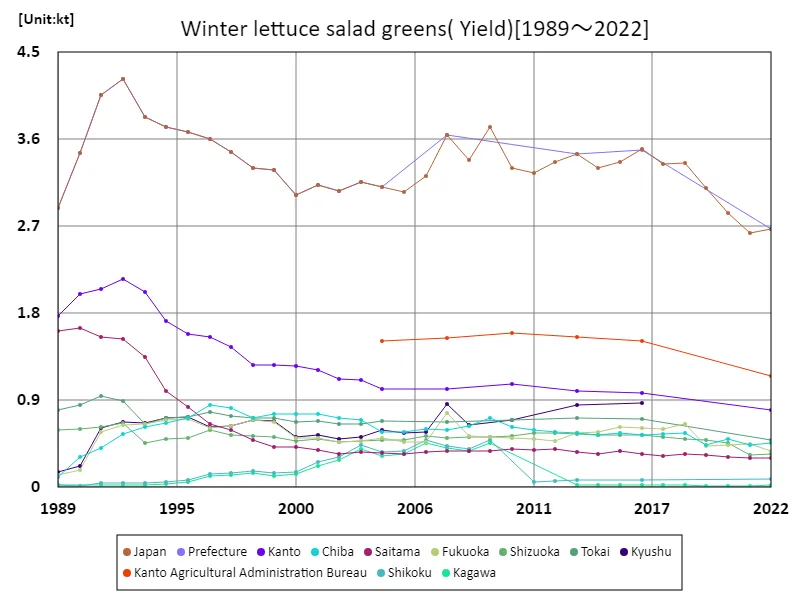

The maximum is 4.22kt[1992] of Japan, and the current value is about 63.3%
Salad lettuce harvest volume among winter lettuce (by prefecture).
As of 2022, Chiba leads Japan in leafy vegetable production with a notable yield of 454 tons, reflecting its significant role in the industry. Over the years, Chiba has consistently capitalized on its favorable growing conditions and advanced agricultural techniques. This peak in production highlights ongoing regional strengths and suggests that Chiba’s practices could be influential in shaping future trends for leafy vegetables in Japan. Overall, Chiba’s prominence underscores its pivotal role in meeting national demand.
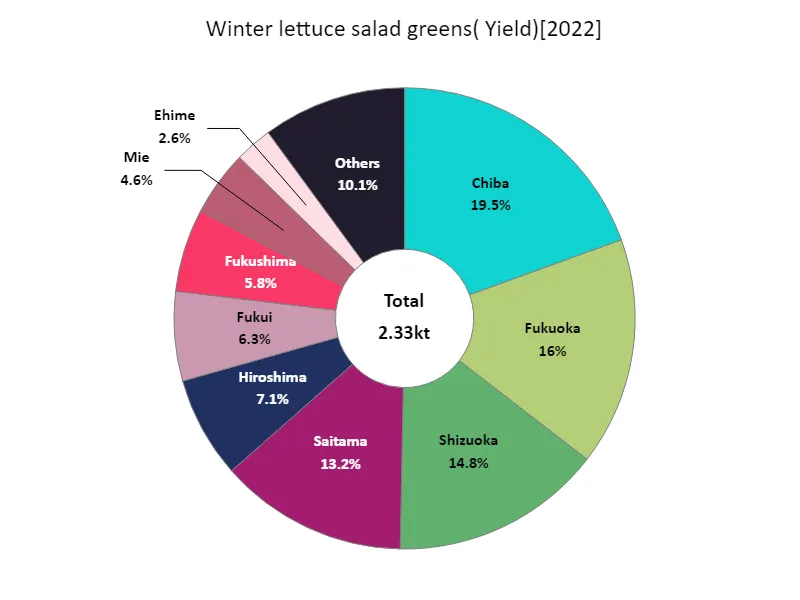

The maximum is 454t of Chiba, the average is 93.3t, and the total is 2.33kt
Area planted with winter lettuce – salad greens (main data).
Since 1989, Japan’s winter lettuce planting area has seen a decline from its peak of 224 hectares in 1992. Currently, the planted area stands at 62.9% of this peak, indicating a significant reduction. This trend suggests a shift in agricultural priorities or challenges affecting lettuce cultivation. Despite this decrease, regional adjustments and advancements in farming methods may influence future changes, aiming to optimize the balance between production and available land. Understanding these trends is vital for strategizing future agricultural practices.
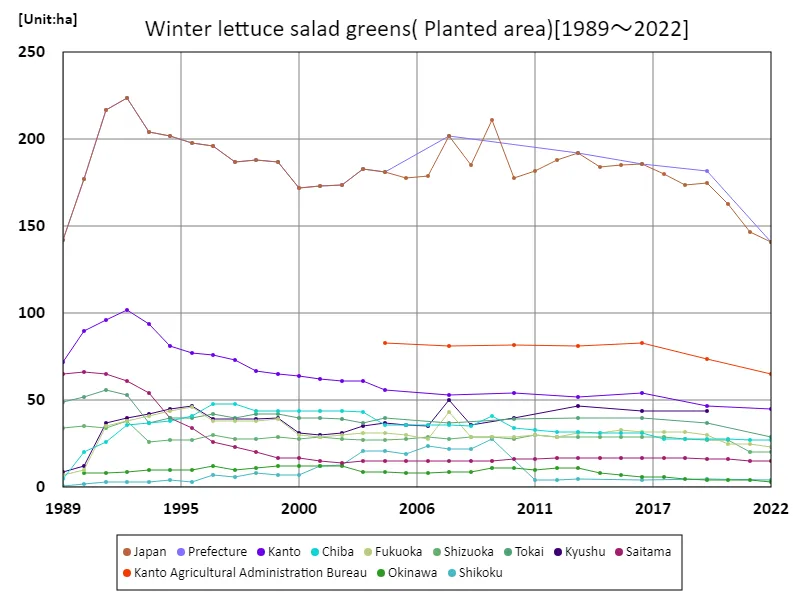

The maximum is 224ha[1992] of Japan, and the current value is about 62.9%
The area cultivated with winter lettuce, salad greens (by prefecture).
According to the latest data from 2022, Chiba Prefecture has the largest area planted to leafy vegetables in Japanese agriculture at 27 hectares, making it the largest area currently planted. These figures show that Chiba Prefecture plays a very important role in leafy vegetable production. The data also shows recent advances in agricultural technology and production methods, as well as the effects of agricultural policies and investments in Chiba Prefecture. The record high planted area of leafy vegetables indicates expectations for sustainability and growth in agricultural production. Additionally, other prefectures may also become more competitive in leafy vegetable production. These trends are influenced by local climatic conditions, land use, farmers’ skills, and changes in market demand. Leafy vegetable production will continue to be an important topic in Japanese agriculture, and there will be a demand to build sustainable agricultural systems and adapt them to market needs.
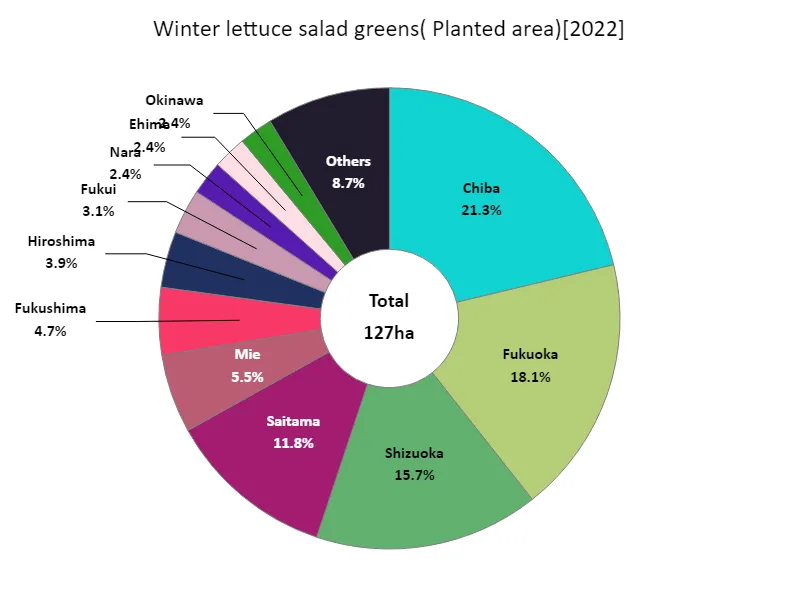

The maximum is 27ha of Chiba, the average is 5.08ha, and the total is 127ha
Shipment volume of winter lettuce that is salad greens.
In 2022, Chiba led Japan in shipping salad greens, reaching 431 tons, the highest volume nationwide. The average shipping volume across regions was 86.1 tons, with a total of 2.15 kt. This trend highlights Chiba’s dominant position in the winter lettuce market, driven by its efficient production and distribution systems. The data underscores the regional disparities in shipping volumes and suggests that Chiba’s advanced practices could serve as a model for enhancing production and distribution in other areas.
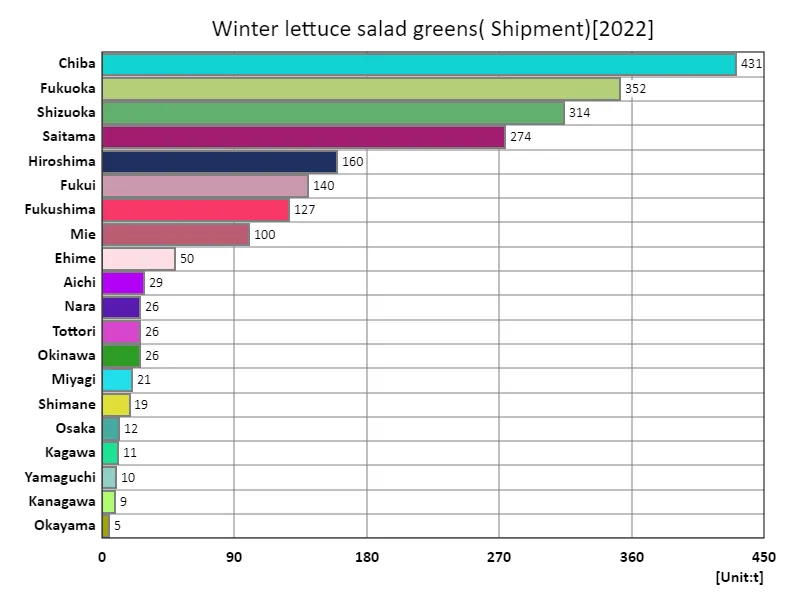

The maximum is 431t of Chiba, the average is 86.1t, and the total is 2.15kt
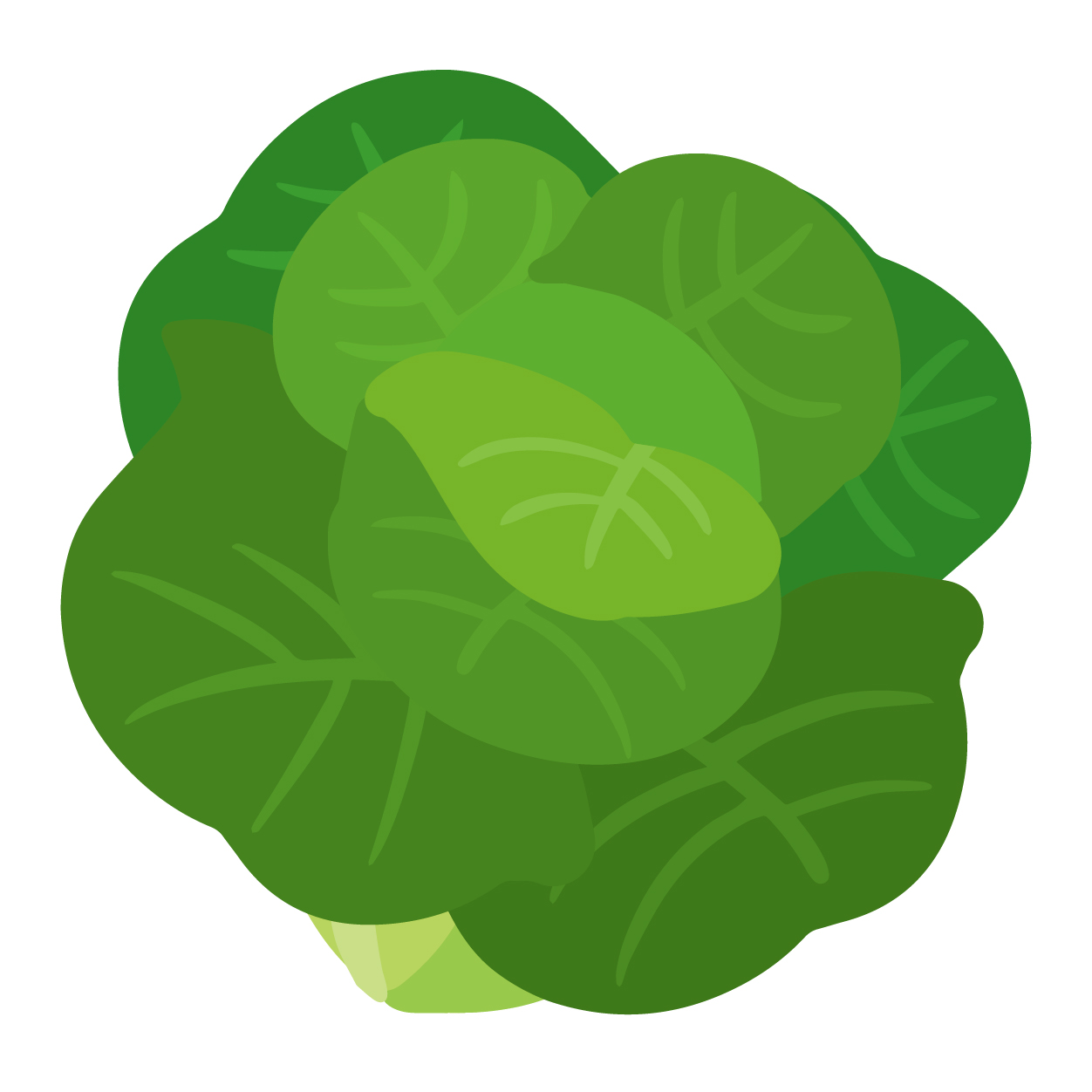


Comments